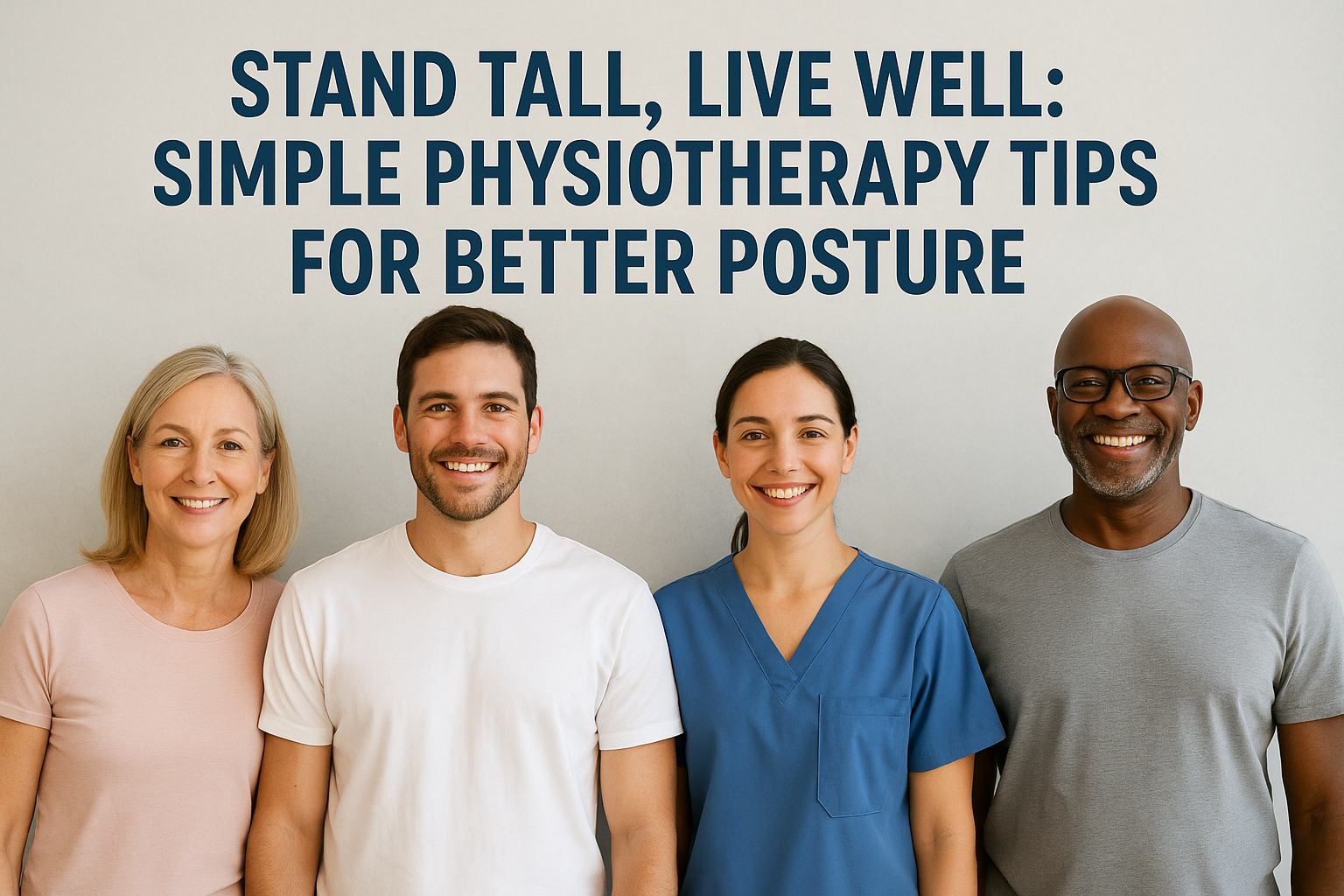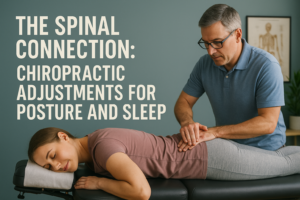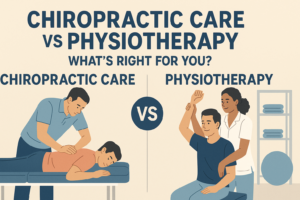1. Understanding Posture and Its Importance – Simple Physiotherapy Tips for Better Posture
Good posture is more than just standing up straight. It’s about keeping your body in proper alignment—ears over shoulders, shoulders over hips, hips over knees, and knees over ankles. Think of it as finding that sweet spot where your body feels balanced and at ease. When we maintain good posture, we’re not only looking more confident but also doing our body a big favour.
Over time, poor alignment can lead to a host of issues: chronic back or neck pain, restricted breathing, digestive discomfort, even fatigue and low mood. It’s like your body’s working overtime just to keep you upright against gravity. One of the easiest ways to start correcting this is by applying simple physiotherapy tips for better posture—small, consistent changes that train your muscles to hold you correctly.
2. Assessing Your Current Posture with Posture Correction Physiotherapy
Before jumping into corrective exercises, it helps to know exactly where you stand (literally). A quick DIY “wall test” can give you a baseline: stand with your back, head, and shoulder blades against a wall, feet a few inches away. If you can slide your hand behind your lower back with only a little space, you’re in good alignment. Too much gap means an excessive arch; no gap can indicate a flat-back posture.
For detailed feedback, consider a session of posture correction physiotherapy, where a specialist measures your alignment, observes your movement patterns, and may even take progress-tracking photos. They’ll help you pinpoint those hidden tension spots—like habitual shoulder hunching over your laptop or always carrying a heavy bag on one side.
3. Ergonomic Adjustments for the Workplace | Simple Physiotherapy Tips for Better Posture
Many of us spend hours at a desk, so setting up your workspace right is crucial.
- Chair setup: Feet flat on the floor, knees at 90°, and lumbar support (a small cushion works wonders).
- Screen height: Top of the monitor at eye level—no craning your neck down. If you use a laptop, prop it up and plug in an external keyboard.
- Keyboard & mouse: Elbows at about 90°; wrists straight.
- Movement breaks: Aim to stand or walk for a couple of minutes every 30–60 minutes.
Incorporating simple physiotherapy tips for better posture, like micro-breaks to reset your spine, can transform how your body handles long stretches of sitting.
4. Posture-Correcting Exercises and Stretches for Posture Correction Physiotherapy
Strength and flexibility go hand-in-hand when it comes to posture.
- Core builders: Planks, bird-dogs, and glute bridges forge that natural corset around your spine.
- Upper-back strengtheners: Shoulder blade squeezes and reverse flies combat rounded shoulders.
- Chest & hip flexor stretches: Gentle doorframe chest stretches and kneeling hip flexor stretches open up the muscles that pull you forward.
Many online routines branded as posture correction physiotherapy combine these exercises into a balanced program. Even 10–15 minutes daily can retrain your muscles for lasting alignment.
5. Lifestyle Changes for Better Posture – Simple Physiotherapy Tips for Better Posture
Posture isn’t ‘off duty’ when you lie down or go about daily tasks. Consider:
- Sleeping position: Back or side sleeping keeps your spine neutral. Side sleepers, hug a pillow between your knees.
- Mattress choice: Medium-firm to support curves but with enough give for pressure relief.
- Mindful check-ins: Set phone reminders to scan your posture—are shoulders drooping? Is your chin jutting forward?
And don’t forget your shoes. A supportive arch and stable heel help align your ankles, knees, hips, and spine. Integrating just a few simple physiotherapy tips for better posture into your routine can make all the difference by day’s end.
6. Technology and Tools for Posture Correction Physiotherapy
We live in a tech era—so why not use it to our advantage?
- Wearables: Some smartwatches and fitness trackers now include posture-alert features.
- Clip-on devices: Small sensors attach to your upper back and buzz when you slouch.
- Ergonomic accessories: Lumbar cushions, adjustable monitor arms, split keyboards—you name it.
These gadgets are best used alongside guided posture correction physiotherapy, not as one-stop fixes. Think of them as helpful nudges on your journey to better alignment.
7. Maintaining Good Posture During Physical Activities | Simple Physiotherapy Tips for Better Posture
Whether you’re walking, running, lifting weights or even vacuuming, posture matters.
- Walking/running: Keep your gaze forward, shoulders relaxed, and roll heel-to-toe.
- Weightlifting: Proper form protects joints and reinforces good alignment—consider a coach’s guidance.
- Daily chores: Bend your knees and hips (not your lower back), keep items close to your body, and avoid twisting under load.
Embedding simple physiotherapy tips for better posture into every movement ensures your body learns correct habits, not just when you remember to hold yourself up.
Summary: Stand Tall with Simple Physiotherapy Tips for Better Posture
Improving your posture is a marathon, not a sprint. Consistent effort—through ergonomic tweaks, targeted exercises, conscious check-ins, and smart use of tech—yields less pain, more energy, and greater confidence. By weaving these simple physiotherapy tips for better posture into your life, you’ll build habits that last far beyond today.
FAQs on Simple Physiotherapy Tips for Better Posture and Posture Correction Physiotherapy
Q: How long does it take to correct poor posture?
A: Most people notice small improvements within a few weeks, though fully re-training muscle habit can take months.
Q: Can poor posture cause back pain?
A: Absolutely. Misalignment strains spinal structures and muscles, often leading to discomfort over time.
Q: Are posture correctors effective?
A: They’re useful as short-term reminders, but long-term success comes from building the supporting muscles via exercises and posture correction physiotherapy.
Q: What are the best exercises for improving posture?
A: Planks for core strength, scapular squeezes for upper-back stability, and chest stretches to balance forward-pulling muscles.
Q: How often should I take posture breaks at work?
A: Aim for a quick stretch or stand every 30–60 minutes to reset alignment and boost circulation.




